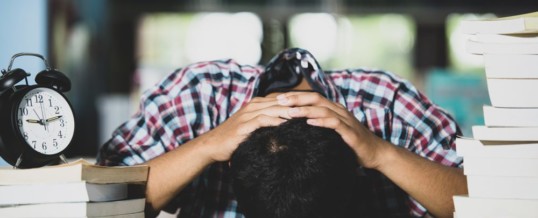Self-harm is rising among children and teens in Virginia, new report finds
The study reinforces concerns over the pandemic’s toll on mental health
Self-harm among children in Virginia — already rising before the COVID-19 pandemic — has continued to increase over the last two years, reinforcing concerns that the virus could exacerbate an existing mental health crisis.
The data, released last week by the Virginia Department of Health, is part of a new push to highlight work by the agency’s epidemiologists and inform communities and policymakers of pressing public health issues. The department’s first two reports focused on self-harm and suicide among youth aged 9 to 18 as well as alcohol-related deaths, which have also been rising steadily since 2016.
Dr. Colin Greene, Virginia’s state health commissioner, said in a statement that both outcomes were “amenable to interventions,” making them a particularly important target for improvement. But children’s mental health, especially, has been a recurring focus for a wide range of providers after more than a year of school shutdowns in some parts of the state.
In February 2021, the Virginia chapter of the American Academy of Pediatrics “celebrated” a directive from then-Gov. Ralph Northam to reopen classrooms, citing concerns for their patients’ mental health. A survey of 203 doctors showed that 98 percent had seen an increase in anxiety among children and adolescents and 95 percent reported an increase in depression. Nearly 60 percent of pediatricians said they had seen an increase in suicidal ideation, part of an “alarming decline in mental, behavioral, academic and general health” among patients, according to a statement from the group.
Statewide data illustrates some of the impacts of worsening mental health among children and young adults. Researchers from the Department of Health examined the number of emergency room visits and nonfatal hospitalizations related to self-harm over the last five years, as well as deaths by suicide from 2015 to 2021. Overall, they found an increase across all three measures.
Emergency room visits for suicidal thoughts, self-harm or suicide attempts more than doubled over a five-year period, accounting for six percent of all visits among 9 to 18-year-old Virginians in 2021, according to the report. Rates were highest for 13 to 15-year-old girls, most markedly last year, when they accounted for 13 percent of visits among that demographic.
Researchers noted that the number of emergency departments reporting that measure increased from 92 to 107 over the same time period, likely contributing to the increase. But inpatient hospitalizations for self-harm also increased by 10 percent without a change in the number of hospitals reporting. Girls also accounted for about three of every four hospitalizations and a more significant rise in rates, while the measure remained steady among boys.
Unlike other measures, boys accounted for 71 percent of deaths, compared to 29 percent among girls. Just over half of all deaths by suicide over the same time period were linked to guns, according to the report.
“It is important to reduce risk factors and increase protective factors,” researchers wrote, adding that treatment, reducing access to lethal means and strong support networks can all help prevent self-harm and suicide.
A Senate amendment to the state’s still-unfinished two-year budget would give $10 million to the Virginia Department of Behavioral Health and Developmental Services to expand mental health treatment in schools. Advocates, though, pointed out that the allocation — which schools would have to apply for through grants — would likely leave out a large number of students.
“The limited amount also creates challenges when it comes to deciding who has the greatest need for the services,” Mental Health America of Virginia wrote in a February blog post.
“Hopefully, the end goal would be to show that these services are warranted, eventually leading to more funds being set aside for these types of programs,” the advocacy group added. “The more money, the more opportunity for a larger number of schools to participate.”
(Editor’s Note: This article has been republished by permission from the Virginia Mercury.)


